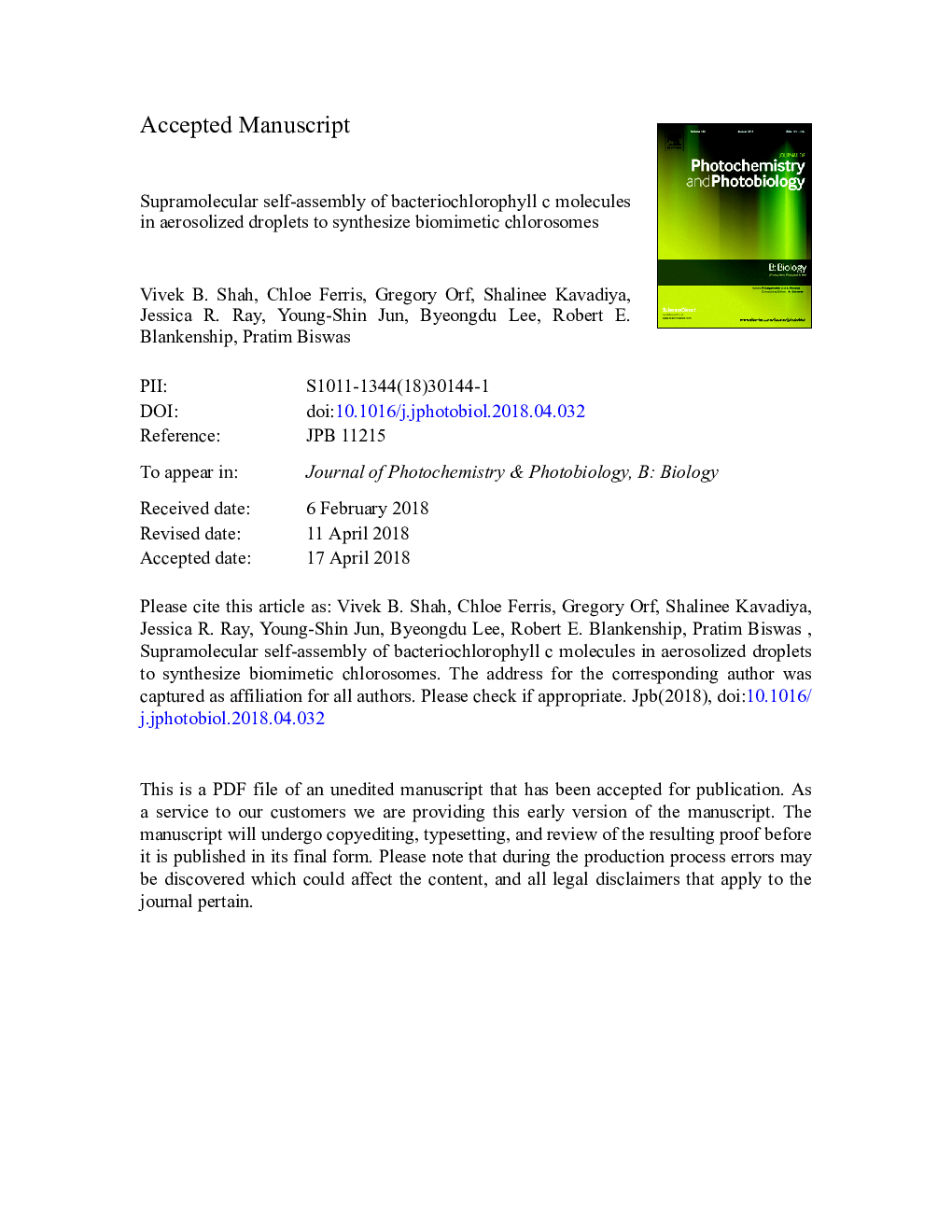| Article ID | Journal | Published Year | Pages | File Type |
|---|---|---|---|---|
| 6493225 | Journal of Photochemistry and Photobiology B: Biology | 2018 | 34 Pages |
Abstract
The unique properties of chlorosomes, arising out of the self-assembled bateriochlorophyll (BChl) c structure, have made them attractive for use in solar cells. In this work, we have demonstrated the self-assembly of BChl c in aerosolized droplets to mimic naturally occurring chlorosomes. We compare two different methods for self-assembly of BChl c, one using a single-solvent and the other using two-solvents, and demonstrate the superiority of the two-solvent method. Results show that the self-assembled BChl c sprayed at different concentrations resulted in a varying red shift of 69-75â¯nm in absorption spectrum compared to the solution, which has peak at 668â¯nm corresponding to the monomeric BChl c. The sample fluoresces at 780â¯nm indicating a quality of self-assembly comparable to that observed in naturally occurring chlorosomes. In order to mimic chlorosomes, solution containing BChl c, BChl a, lipids and carotenes in same proportion as in chlorosomes is sprayed. The resulting self-assembly has an absorption peak at 750â¯nm, shifted by 82â¯nm compared to that of monomers and the fluorescence peak at 790â¯nm. Thus in presence of lipids and carotenes, both the absorption and fluorescence peaks are red shifted. Further, using grazing incidence small angle X-ray scattering (GISAXS), we characterized the deposited films, and the 2D X-ray scattering patterns of sample clearly indicate the distinct lamellar structure as present in chlorosomes. The results of this work provide new insights into self-assembly in aerosolized droplets, which can be used for assembling a wide range of molecules.
Related Topics
Physical Sciences and Engineering
Chemical Engineering
Bioengineering
Authors
Vivek B. Shah, Chloe Ferris, Gregory S. Orf, Shalinee Kavadiya, Jessica R. Ray, Young-Shin Jun, Byeongdu Lee, Robert E. Blankenship, Pratim Biswas,
